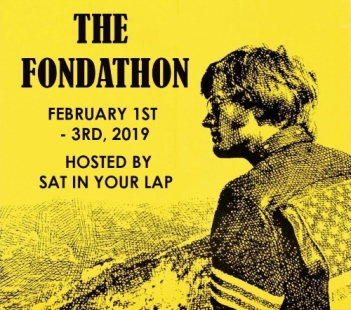#1960s #AllPosts
Taking a trip with Peter Fonda, Dennis Hopper and Jack Nicholson…
The scenery, sounds and story of a motorcycle themed Western filmed in late 1960s America.
Easy Rider (1969) – Original Trailer, OldSchoolTrailers © photos by Columbia Pictures
Cinema has always adored the Western genre. The lure and love of the Old Frontier regaled in classic Westerns with good guys and bad guys. Horses, stetsons and rural backdrops. The 1970s brought Sci-fi Westerns such as Westworld (1973). This featured one of The Magnificent Seven (1960), Yul Brynner as a robot out for revenge.
In the 1980s, Space Westerns came to the fore with Outland (1981), and director Peter Hyams’ vision of High Noon (1952) in space. Easy Rider (1969) was filmed in the late 1960s and is like a bridge between those classic Westerns and these Western subgenres.
In this film, Peter Fonda – the star, producer and co-writer – is called “a modern western set on motorbikes”. These two motorcycle-riding hippies showed a New Frontier with choppers, motorbike helmets and the oil industry.
Two leads of the classic and this motorcycle themed Western subgenre were ironically part of a strong acting dynasty, a father and son. The Fondas had Henry Fonda in the former genre and his son Peter Fonda in the latter. Both these Western types are captured together in Easy Rider showing a scene with a horseshoe being replaced in the foreground, and a motorcycle being fixed in the background.
The horse being “skittish” at the sound of the bicycle, represented those from the older generations being fearful of this younger population. and their more anti-establishment ways. But these symbols showed how this emerging subculture became a radical force in the New Wave of cinema and replaced those more carefree chirpier movies made in the sixties.
The story starts with a drug deal down Mexico’s way where our anti-heroes, a couple of hippies Wyatt (Fonda) and Billy (Hopper) procure some cocaine. The pair smuggle this into America (off-screen), then are seen selling this on to a contact (Phil Spector) in Los Angeles. This money is concealed in a tube in Wyatt’s fuel tank before they travel on to the Mardi Gras in New Orleans.
Along the way, they come across some interesting characters symbolising both the new and old Frontier. They meet a rancher and join him and his family for lunch. After they pick up a hitchhiker (Luke Askew), the three head to a commune where free love, entertainment and drugs are aplenty.
Both these visits, show those believing in God, but this is shown in different ways. These are the traditional way and then an unconventional way. Both groups are dependent on the soil for their food, thus showing everyone’s different but really the same. On leaving the commune, the hitchhiker presents Wyatt with some LSD, telling him to take this when the time is right and with the right people.
On arrival at one town, we find Wyatt and Billy in jail for driving a motorcycle without a permit during the town’s parade. In the cell, they meet an alcoholic lawyer George Hansen (Nicholson), who is sleeping off a hangover. He joins them on their trip and the three head to Mardi Gras. After the pair introduce this man to how to use marijuana rather than alcohol, this leads to intense drug-fueled discussions around the campfire.
Hansen passionately talks about his controversial thoughts on UFOs and the government. In this scene, the trio stops at a town cafe and gets attention from young women and hateful comments from the older sheriff and his buddy. The trio sleeps rough. They have another campfire and Hansen warns his travelling companions that others both fear and hate their alternative way of life. That night, the trio are attacked by some unseen redneck perpetrators with Hansen murdered…
Fonda and Hopper draw you into this film with a look at the then emerging hippie subculture. This is through a terrific soundtrack and amazing cinematography. The storyline aims to give the youth of their day a film they could identify with, over the more conventional films of that time.
The fantastic soundtrack includes Bob Dylan, The Band, Steppenwolf, The Byrds and Jimi Hendrix. Again the soundtrack echoes the mood and the flavour of this film with Born to be Wild played in the opening credits as our anti-heroes ride into view.
This soundtrack is always appropriate to the scenes with the lyrics often reflecting the on-screen happenings. Titles also including The Pusher played as the cocaine is sold in Los Angeles, and this an anti-hard drugs song establishing our leads as anti-heroes. And the song Wasn’t Born to Follow also has a strong anti-establishment theme.
The accompanying scenery is beautifully filed. This shows the rural America of the men’s trip between Los Angeles and New Orleans. There are a few landmarks including what looked like the Rockies and Sacred Mountain at sunset. The latter will be more than familiar to those who love the Western genre.
These stunning shots add indirectly to the storyline by showing the fear of this subculture was not limited to one place. These scenes are shot both day and night. The men slept outdoors for most of the film – with them refused rooms for the night – and natural light was used in these scenes.
The film plot at first seems confusing, with the effects of the drug use seen in Billy as he is seen to be paranoid and non-trusting, Wyatt appears more deep and philosophical. The script was apparently for the most part improvised. The film reportedly has the story expanded in an uncut version of many hours.
As we travel with the men on their journey, the film becomes an interesting statement confronting the changing attitudes of the time. This is with a Fonda-planation of this culture as Wyatt educates George Hanson, a naive Southern boy on the lingo of this time. He also introduces him to marijuana. This, in turn, educates those watching this film. For this reason, the film is more of a statement of those times.
The film was interestingly shot and IMDb reports this was as passers-by and friends were recruited to do this job. This gives an uneven, choppy feel to some parts of the storyline and is particularly seen in the later scene where LSD is taken. This drug was not actually taken by the actors during filming.
However, scenes with Jack Nicholson – who won an Oscar nomination for this role – taking marijuana next to the campfire were reportedly filmed with the three actors taking this substance. Sabotage News’ article about this film tells how Fonda and the other actors were stoned. Nicholson added that;
After the first take or two, the acting job became reversed. Instead of being straight and having to act stoned at the end, I was now stoned at the beginning and having to act straight, and then gradually letting myself return to where I was – which was very stoned.
But despite this apparent reefer madness, this film is more than worth the ride, as you take a journey into the late 1960s culture of drugs, free love and communes.
Weeper Rating: 😦 😦 😦 /10
Handsqueeze Rating: 🙂 🙂 🙂 🙂 /10
Hulk Rating: ![]()
![]() /10
/10

The Fondathon 2019, No 5
This film review was added to Sat in Your Lap‘s Fondathon. Other posts with this cast include,
- Jack Nicholson in Goin South, The Postman Always Rings Twice, Terms of Endearment and more.
- Dennis Hopper stars in Catchfire and EdTV.
- Karen Black in Airport 75, Burnt Offerings, Family Plot and more.
- Peter Fonda appears in his tribute HERE and The Cannonball Run.





I took me a few shots to warm up to this film. The change of pace after the LSD trip scene still throws me a bit.
LikeLiked by 1 person
That scene is a bit freaky, it’s so completely different to the rest of the film.
LikeLike
I only got around to watching this a few years ago sober and clean. Mustve watched it a dozen times when I was a stoner. Its still a good movie, but the LSD trip freaks me out now.
LikeLiked by 1 person
The LSD scene is a bit freaky at the best of times, the film completely changes pace then.
LikeLike
Great read! I never viewed it as a western before, thanks for helping me see it in a different light.
It’s a long time since I’ve seen Easy Rider but ill never forget the hallucination sequence and the ending.
LikeLiked by 1 person
I did love this movie and it certainly feels trippy. Jack Nicholson of course is fantastic, and his rapport with Fonda and Hopper evident in all their scenes together.
LikeLike
I only saw Easy Rider for the first time quite recently and I loved it, especially the soundtrack which introduced me to the music of The Band. The late 60’s. early 70s certainly was a great era for road movies with Two-Lane Blacktop and Vanishing Point following in the wake of this film.
LikeLiked by 1 person
This was my first time with this movie too, and loved Jack Nicholson in it.. fantastic as always. Had read about it of course. Not seen either of the movies you mentioned, are they worth checking out?
LikeLiked by 1 person
[…] Realweegiemidget Reviews: Easy Rider (1969) […]
LikeLiked by 1 person